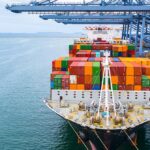As the shipping industry continues its journey to decarbonisation, many of our Members will have noted the changes to MARPOL Annex VI introducing the below listed technical and operational goal-based measures, coming into effect as from 1st of January 2023.
Now well underway in 2023, we list for our Members’ reference again the main highlights of the regulatory changes and its consequences on ship operations and ship management:
- Introduction of Energy Efficiency Existing Ship Index (EEXI) – retroactive EEDI requirements applied to existing ships from 1 January 2023.
- Introduction of a rating mechanism (A to E) linked to the operational Carbon Intensity Indicator (CII), taking effect from 1 January 2023.
- Introductions of Enhanced Ship Energy Efficiency Management Plan (SEEMP) to include targets for operational emissions, where an approved SEEMP needs to be kept onboard from 1 January 2023.
Applicable to ships from 400GT and built before 2013, EEXI measures CO2 emissions by considering the ship’s design parameters. It is similar to the Energy Efficiency Design Index (EEDI), where the latter only applies to new vessels built from 2013 as EEXI applies retrospectively. EEXI is calculated using 3 values: engine power, fuel consumption and fuel to CO2 corresponding conversion factor. The attained EEXI coefficient is certified (one time certification) and is then compared to IMO’s required EEXI for the purpose of compliance. If the coefficient ends up outside the ‘required EEXI’, shipowners and charterers will need to act to improve efficiency. Shipowners also need to develop and keep an EEXI Technical File, which includes the data used to calculate the EEXI value, and will be used as a basis to verify compliance with the regulations.
Applicable to ships from 5000GT and higher, CII acts as a method of measuring how efficiently a vessel carries goods or passengers in its voyage. The CII includes distance traveled, its speed as well as the fuel usage. Here vessels will be given rating from A to E, A being the highest. If any vessel receives rating of D for three consecutive years or E rating in a single year, that vessel needs to undergo corrective measures. These corrective measures are to be recorded in the SEEMP documentation. Contrary to EEXI (which is a one time certification only) the CII assessment is made on annual basis with the IMO’s emission limits reducing each term.
Thirdly SEEMP Part III is an addition to existing SEEMP Part I and II. This document will show the vessel’s plan on reducing CII each year for meeting IMO standards, which is the vessel’s operational energy efficiency for the next three years. This plan is subject to approval by flag state (or recognised organisation) and company audit. Therefore this is intended to help companies achieve the required CII. This documentation must be kept on board of the vessel. SEEMP Part III is especially amended to include CII in the ships planning document, therefore it can be accessed any time to reveal the vessels measures on attaining the required results.
In anticipation of discussions between Owners and Charterers on required ship coefficients, BIMCO has introduced clauses for inclusion into charterparties, namely ‘CII Operations Clause for Time Charter Parties 2022’ and ‘EEXI Transition Clause for Time Charter Parties 2021’. These clauses are primarily to apportion the risk and liabilities between Owners and Charterers as a result of the changed regulation and it is recommended that members consider the inclusion of these clause into their Charter Parties.
Separate to the amendments to MARPOL Annex VI as described above, EU Members states have also agreed on the inclusion of the shipping industry into its “Fit for 55 in 2030 package”. This system is based on “cap and trade” emission scheme called Emissions Trading System (ETS), which is by requiring companies to buy permits to emit carbon dioxide. If and when implemented this will require shipping companies to purchase allowances for carbon emissions relating to voyages of ships from 400GT to/from EU ports.
Originally prevised for a start date on January 2024, the legislation is yet to be formally adopted and discussions on implementation of this trading scheme are currently underway in the European Parliament. In this respect it is to be noted that on 23 March 2023, a provisional agreement has been reached between the European Commission, the European Council and the European Parliament on the FuelEU Maritime Initiative as part of the EU climate change package ‘Fit for 55’. The main objective of the initiative is to reduce the carbon footprint of the EU maritime sector by using more renewable and low-carbon fuels, without creating disturbances to the shipping industry or disrupting the EU internal market.
It is expected in the short term that the provisional agreement will be formally approved by the European Council and the European Parliament, after which the FuelEU Maritime Initiative should come into force on 1 January 2025. The initiative aims to ensure that maritime transport meets the EU’s climate targets for 2030 and 2050 and will play a crucial role in the implementation of the European climate law.
For a detailed report on the content of the FuelEU Maritime Initiative we refer to the press site of the European Council accessible via following link:
https://www.consilium.europa.eu/en/press/press-releases/2023/03/23/fueleu-maritime-initiative-provisional-agreement-to-decarbonise-the-maritime-sector/
For specific questions or comments, members are invited to contact the NNPC via claims@nnpc.nl.





